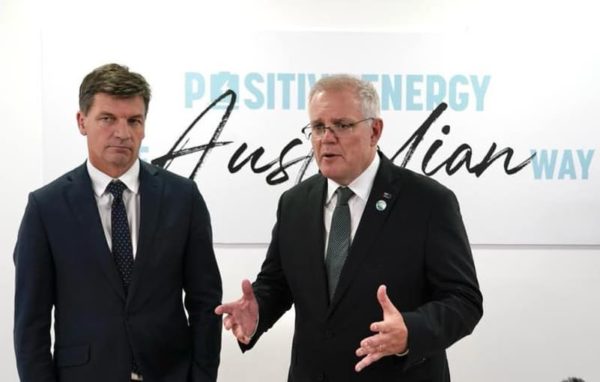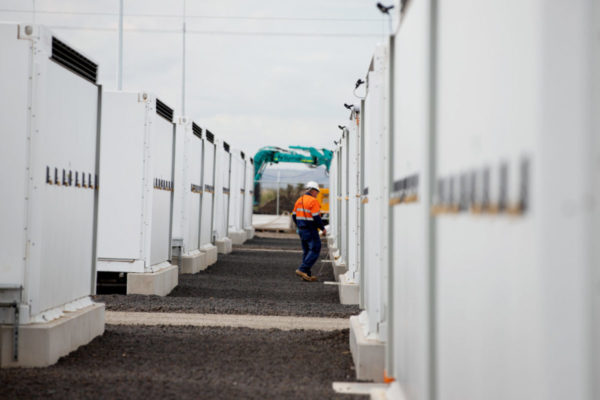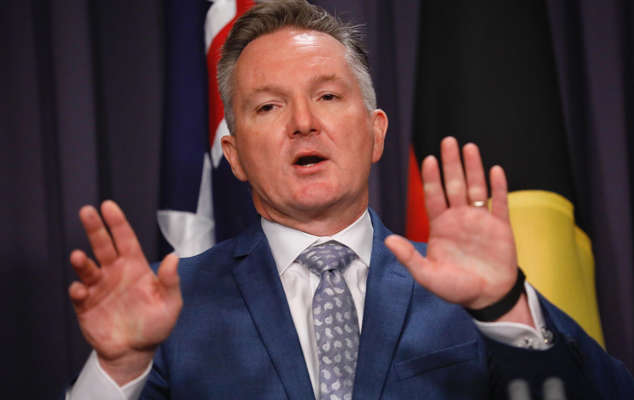With the Australian Energy Market Operator (AEMO) now warning of maximum power load interruptions in Queensland, New South Wales, Victoria, South Australia and Tasmania, the state of play in Australia’s National Electricity Market is grim.
The commonly listed reasons for the crisis, including coal plants failures ensuing from disrepair, soaring global gas prices, and a local cold snap, strike Bruce Mountain, the Victoria Energy Policy Centre’s director, as “naive” and “uncritical” of what’s really going on. That is, it fails to grapple with the market dynamics at play and the incentives for generators to exacerbate problems and withdraw supply to manufacture higher prices.
“I think there’s very likely to be extensive market cornering here,” he told pv magazine Australia. “It’s a confluence of market design and market policy failure over a long period of time which has got us to this position.”

Image: Facebook
More on that shortly, but in the meantime the director expects AEMO to bring the situation under control in the coming weeks through mechanisms which allow it to force generators to produce energy. A full energy market intervention involving state and federal governments is also distinctly possible, albeit severe, he said.
Although it has been building for some weeks, the crisis has ramped up dramatically in the last days as market price caps from AEMO have come into effect. This has caused generators to withdraw production.
“Arguably they [generators] have been doing that already, but not actually pursuant to price caps. They’ve been doing that to push the prices up to even higher levels,” Mountain said.
Now the price caps have arrived, gas generators are hitting back by saying they can’t cover costs, and are refusing to produce, he says. While fuel prices for gas and coal have certainly increased, Mountain points out most generators operate using longterm contracts.
“It’s not altogether clear altogether clear what the production costs are of coal and gas generation today. You can point to spot markets price as some have, and they’ve said we need $440 per megawatt hour in order to generate from gas, but a whole lot of the fuel that the generators use is actually contracted already, so these are not the costs that they face.”

Image: NSW Gov
Moreover, the underlying incentive for coal and gas generators to fix the problem is “weak” Mountain says, as companies know “they can get fantastically high prices when they don’t fix things in time.”
“And more generally, feeling there isn’t a lot of competition from storage to push them out of the market,” Mountain says, referring to the lack of renewable industry competition which could counteract this price gouging.
The core issue – as AEMO have also alluded to – is not a complete and sudden disparity between supply and demand. “It’s a question of ensuring that [generators] actually produce, and there are processes for that,” Mountain says.
“It will be a severe things for the government to take charge of the market, but I think it’s probably come to that.”
Short term solutions: energy market intervention
AEMO has already begun practicing market interventions, Mountain says. “I suspect they’ll be doing more and more of that,” he added.
Mountain expects soon the government agency will begin instructing production, in which case generators would be forced to produce whether it’s profitable or not, and would be compensated for their generation based on their actual costs at a later date.
“It will almost certainly mean a lower cost of production than the cost we have now because all the generators are getting the market clearing price.”
If generators refuse to follow AEMO’s production orders, Mountain says it would result in not only fines for them, but a “massive power supply crisis.”
“But I think that’s almost inconceivable. The industry would be absolutely cutting their throats because they know this would just be blatant bullying.”
Short term solution: storage target introduction
Another solution which could be introduced is something Victoria Energy Policy Centre has been advocating for sometime: an energy storage target.
Such a proposal isn’t new for clean energy circles. It would work similar to the Renewable Energy Target (RET), and would even follow in its acronym footsteps, labelled the REST, or the Renewable Energy Storage Target.
Such a scheme would create an obligation to buy energy storage credits and thus stimulate investment.
Irrespective of market design reforms, which also need to happen Mountain says, such a scheme should be introduced quickly to prompt storage market.
“There is no storage policy.”

Image: Watts Up Solar
“We have no systematic compensation for storage. We have R&D type funding and the CEFC [Clean Energy Finance Corporation] chucks a bit of money at batteries here and there, but we don’t have a storage incentive scheme.”
While it remains to be seen, it is believed the new federal government will be far more receptive to such ideas compared with the outgoing coalition.
Medium term solution: building storage facilities
In the medium term, the solution doesn’t come in the form of schemes but the construction of actual storage facilities, Mountain says.
This should be prioritised above transmission lines, he adds.
“Governments need to pull out all the stops to ensure storage is built now.”
“We can build a great deal of storage very quickly,” he adds.
Storage would compete with coal and gas generators in the evening, offering an alternative – competition – in a system where there is currently none.
“The critical issue is storage, storage, storage.”
This content is protected by copyright and may not be reused. If you want to cooperate with us and would like to reuse some of our content, please contact: editors@pv-magazine.com.









By submitting this form you agree to pv magazine using your data for the purposes of publishing your comment.
Your personal data will only be disclosed or otherwise transmitted to third parties for the purposes of spam filtering or if this is necessary for technical maintenance of the website. Any other transfer to third parties will not take place unless this is justified on the basis of applicable data protection regulations or if pv magazine is legally obliged to do so.
You may revoke this consent at any time with effect for the future, in which case your personal data will be deleted immediately. Otherwise, your data will be deleted if pv magazine has processed your request or the purpose of data storage is fulfilled.
Further information on data privacy can be found in our Data Protection Policy.